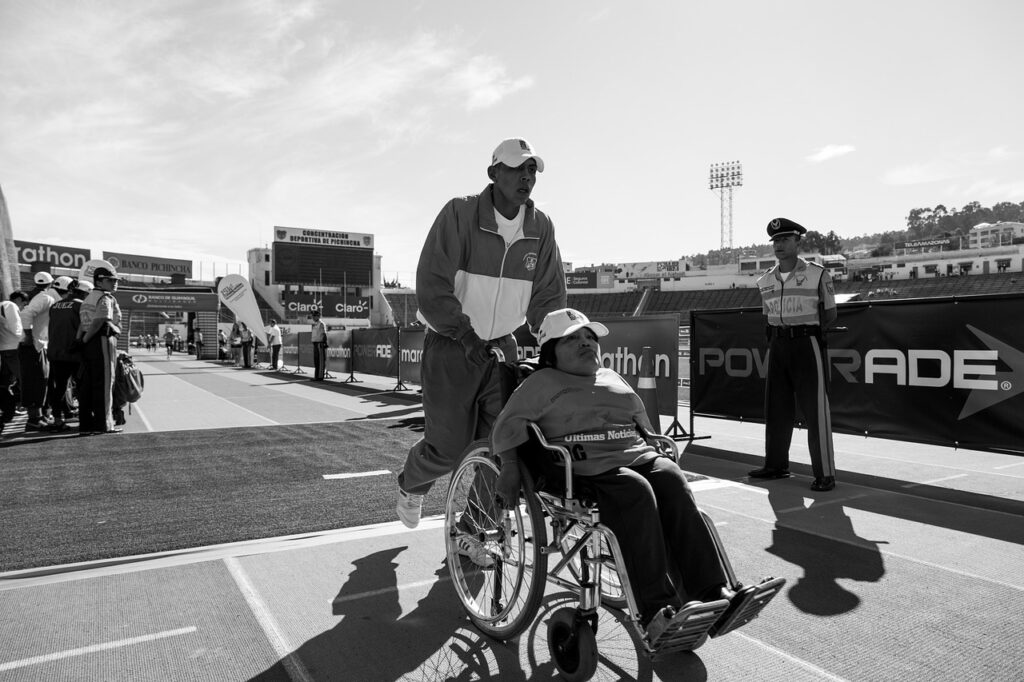The Americans with Disabilities Act (ADA) is a federal law ensuring equal access to public facilities, including parking lots, for individuals with disabilities. Understanding ADA line striping requirements is essential for business owners to create an accessible parking area and avoid penalties. In this blog post, we’ll discuss ADA-compliant line striping’s key elements and practical tips for meeting these requirements.
Key Elements of ADA-Compliant Line Striping:
• Number of Accessible Parking Spaces: The number of required accessible parking spaces in your parking lot depends on the total number of spaces. ADA guidelines stipulate the following ratios:
- For 1-25 total spaces: 1 accessible space
- For 26-50 total spaces: 2 accessible spaces
- For 51-75 total spaces: 3 accessible spaces
- For 76-100 total spaces: 4 accessible spaces
- For 101-150 total spaces: 5 accessible spaces
- For 151-200 total spaces: 6 accessible spaces
- For 201-300 total spaces: 7 accessible spaces
- For 301-400 total spaces: 8 accessible spaces
- For 401-500 total spaces: 9 accessible spaces
- For 501-1000 total spaces: 2% of the total spaces
- For 1001 or more total spaces: 20 spaces plus 1 for each 100 spaces over 1000
• Van-Accessible Spaces: At least one out of every six accessible parking spaces must be van-accessible, with an adjacent access aisle at least 96 inches wide. Such spaces should be marked with a “Van Accessible” sign.
• Access Aisles: Each accessible parking space must have an adjacent access aisle at least 60 inches wide (or 96 inches for van-accessible spaces). These aisles allow wheelchair users to enter and exit their vehicles safely.
• Signage: Accessible parking spaces must be marked with the International Symbol of Accessibility (ISA) on a sign posted at least 60 inches above the ground. “Van Accessible” signs should also be included for van-accessible spaces.
• Surface Slope: The surface of accessible parking spaces and access aisles should be as level as possible, with a maximum slope of 1:48 in all directions.
• Location: Accessible parking spaces should be located as close as possible to the facility’s nearest accessible entrance and along the shortest accessible route to that entrance.
Practical Tips for ADA-Compliant Line Striping:
• Consult with Professionals: To ensure your parking lot meets ADA requirements, work with an experienced line striping company familiar with ADA guidelines. They can help design and implement a parking layout that complies with the law.
• Regular Maintenance: Maintain your accessible parking spaces and signage by repainting lines and replacing signs as needed. Faded or damaged markings can confuse and pose safety risks for individuals with disabilities.
• Stay Up-to-Date on Regulations: ADA regulations may change over time, so it’s essential to stay informed about the latest requirements. Regularly review ADA guidelines and consult with professionals to ensure your parking lot remains compliant.
Creating an ADA-compliant parking lot is not just a legal requirement, but a demonstration of your commitment to inclusivity and accessibility. By providing appropriate numbers of accessible parking spaces, van-accessible spaces, access aisles, signage, and maintaining a level surface, your parking lot becomes welcoming and accommodating to all individuals, including those with disabilities. Staying informed about ADA guidelines and collaborating with experienced professionals will help create a safe, accessible, and compliant parking area for your customers and employees.

